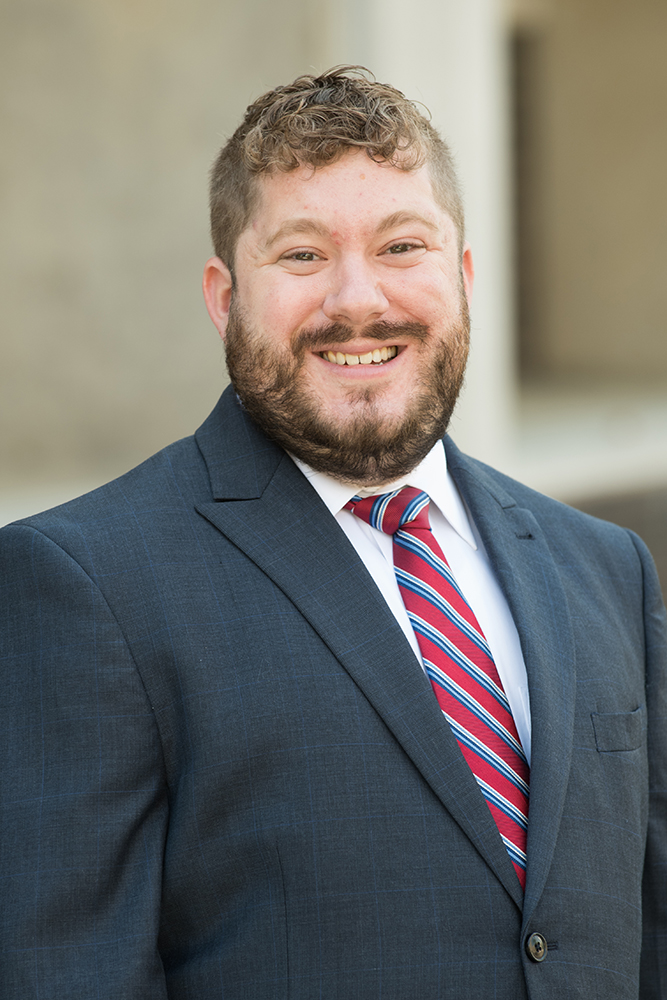From diagnosis to treatment, alums weigh in on how pharmacists form an essential part of the care teams for people living with HIV/AIDS
By Brianna Foth
Imagine receiving the news that you have tested positive for the human immunodeficiency virus (HIV) — as more than 30,000 people do in the U.S. each year. Your head would be spinning with questions: What treatment options are available? What support will you need in the coming months and years as you navigate living with HIV?
Thanks to the many advances made in treatments for HIV and acquired immunodeficiency syndrome (AIDS) over the last few decades, living with HIV now looks very different from how it did even 20 years ago. Since 1987, when the first antiretroviral therapy (ART) for HIV, zidovudine (AZT), was released, more than 25 antiretroviral drugs have been developed, along with new methods for delivery, such as combination pills and long-acting injections.
“It is professionally challenging and rewarding at the same time to have the opportunity to care for this vulnerable and diverse patient population.”
—ThuyVu Do
Yet there are still many challenges patients can face with access to ART, such as navigating the high costs of treatment, working around barriers to adherence such as homelessness or comorbid mental health or substance use conditions, and dealing with the stigma and discrimination that can accompany the health condition.
That is where pharmacists can come in, says certified HIV pharmacist ThuyVu Do (PharmD ‘17).
“Pharmacists are in a unique position to be accessible to both patients and providers in various settings to share our knowledge and expertise,” says Do, who works as a clinical staff pharmacist at AHF Pharmacy, a not-for-profit healthcare provider that specializes in HIV care, in Chicago, Ill. “Pharmacists play a vital role in providing education and counseling and helping patients overcome adherence barriers, and we collaborate closely with providers to help develop therapeutic plans and mitigate side effects.”

As medication experts and coordinators skilled in communicating with many different types of providers, pharmacists like Do and Mark Cinquegrani (PharmD ’19), a certified HIV pharmacist and clinical assistant professor at Temple University in Philadelphia, Pa. — both graduates of the University of Wisconsin–Madison School of Pharmacy — form a crucial part of the broader teams providing HIV care. That care ranges from identifying those at a high risk of acquiring HIV and providing them with prevention education, to helping those living with HIV/AIDS manage their medications, to being on the front lines of helping to reduce the stigma of the disease.
For Do, seeing treatment advances was part of what initially drew her to HIV care.
“It is an exciting time to be specialized in such a dynamic field as HIV, where clinicians need to stay updated with novel therapies and new guidelines,” says Do. “It is professionally challenging and rewarding at the same time to have the opportunity to care for this vulnerable and diverse patient population.”
Providing preventative care
Since the height of the HIV/AIDS epidemic in the mid-1980s, when the U.S. saw more than 130,000 new cases annually, the number of new cases in the U.S. each year has decreased by more than two-thirds. But the rate at which it continues to decrease is slowing: Between 2015 and 2019, the rate of HIV incidence decreased by just 8 percent. Today, about 1.2 million people in the U.S. are living with the disease, and an estimated 13 percent of them are unaware of their HIV status.
An important role pharmacists can play in both the prevention and detection of HIV, says Do, is increasing awareness of HIV by serving as sources of information and education about risk and prevention, as well as by encouraging testing for early detection.

“Pharmacists play a role in HIV prevention and increasing awareness amongst patients and healthcare professionals through ongoing conversations about HIV prevention, frequent testing, and routine immunizations,” she says.
But another way they can aid in prevention is through being providers of pre-exposure prophylaxis (PrEP), or medicine taken prior to exposure to prevent transmission. Only a handful of U.S. states currently give pharmacists authority to prescribe PrEP, yet, recent research shows that in states that have expanded pharmacist prescribing power, more people have filled prescriptions for PrEP, suggesting that pharmacists can play an important role in getting the medication to those who need it.
“We currently have three options for PrEP: two oral pills, and one injectable that we can use for patients to prevent the acquisition of HIV,” says Cinquegrani. “There are certain segments of the population that are very good at accessing PrEP if they need it, and other segments of the population that don’t necessarily think about it, because they don’t really think that they’re at particular risk, so making sure that those people know about PrEP and have access to it is another area for pharmacists to help.”
Many patients who are interested in PrEP can be deterred by the wait times to establish care with a doctor and to schedule a follow-up appointment, says Do, which is another way the convenient access to pharmacists can help.
“Often, half of the battle is just to get the patient to see someone,” she says.
Managing medications
During his time in a residency at the University of New Mexico Hospital, in Albuquerque, N.M., Cinquegrani participated in a weekly HIV clinic, which deepened his longstanding interest in the disease.

“I’ve always been interested in the science behind HIV care and have always found it very interesting from a molecular level,” he says. “I also had some family members who were personally affected by HIV, so that was a bit of a motivating factor, as is being gay and a part of that historically stigmatized community.”
Through his residency, Cinquegrani also led a project in which he conducted a retrospective chart review of medical records from the hospital’s outpatient HIV clinic related to older patients living with HIV, to see how often those patients experienced adverse events as a result of potentially inappropriate prescribing — for example, falls and injuries resulting from cognitive difficulties caused by ART.
What he found was that both potentially inappropriate prescriptions and adverse events were common among these older adults — suggesting that there is room for pharmacists to intervene through conducting medication reviews.
“What we were hoping for is once HIV patients reach a certain age, they automatically get referred over to a pharmacist for overall medication review, to go down their medication list,” says Cinquegrani. “Do they need to be on all these medications? And if they have to be on something, how can we best manage adverse events? Pharmacists are particularly good at finding those solutions and being familiar with what might work for a patient.”

In addition to helping patients optimize their medication regimens, pharmacists can also help with concerns around medication adherence, which often run deeper than simply forgetting to take a medication on a regular basis. People living with HIV are at a higher risk of developing certain mental health conditions, such as depression, due to the stress caused by the stigma and discrimination they can experience as a result of their diagnosis. Homeless people are also disproportionately HIV positive, which can pose significant challenges for medication adherence and retention in care.
“Being HIV positive often links to other conditions or other concerns,” says Cinquegrani. “What we would like to see happen is that when they get diagnosed, we connect them to the other areas of care. So, get them into substance use treatment, if that’s what they need or are looking for, or get them into mental health treatment, and really serve as a gateway into care.”
People living with HIV are a highly marginalized group of people, so pharmacists being able to be part of that community and understand what it means for them to be living with HIV is key, says Adati Tarfa, a Health Services Research in Pharmacy graduate student at the School of Pharmacy, whose research focuses on the barriers to care faced by people living with HIV.
“As pharmacists, our training prepares us to be able to critically assess what’s going on and provide tailored interventions, as well as to form collaborative relationships that a patient might benefit from — for example, with social workers,” says Tarfa.
Reducing stigma
Despite the many strides made in care and treatments, HIV still remains a highly stigmatized disease state, which can lead to feelings of shame, isolation, and despair, and dissuade people from getting tested or treated.
“A lot of the spread of HIV is a result of people not being aware of their status, not wanting to know their status, or patients not wanting to come into clinic and meet with health care providers about their HIV because of the societal pressure around the disease,” says Cinquegrani. “So, the more we can normalize it as a regular health condition that we can manage, the better.”
“Patients first experience stigma within themselves, and I think pharmacists are really cognizant of that and understanding of that,” says Tarfa. “Pharmacists can help decrease that stigma by being there for the patient — being really supportive, being open to communication, and also being able to communicate their knowledge, professional standing, and interest to build rapport with the patients.”

As an educator, Cinquegrani finds it especially important to empower his students with up-to-date information around HIV management and care, so that they are confident in treating patients with HIV, and can treat it just like any other health condition.
“I provide all my students with useful links and resources they can visit to get their questions answered, to make sure they have confidence and that they don’t freeze up when they encounter patients with this condition,” says Cinquegrani. “Because if they’re comfortable talking to patients about it, that also helps to reduce the stigma. When you’re confident in making decisions about these medications, that can really help normalize it, and hopefully make patients feel more comfortable talking to their pharmacists.”
One of the most powerful ways pharmacists can help to reduce stigma, says Do, is to communicate openly with their patients, and to be aware and respectful of their identities as individuals.
“Having those conversations with patients about what it means to be HIV positive — especially with patients who are newly diagnosed — can help reduce that stigma,” she says. “We should also care about their identity — what pronouns they would like to use, what names they prefer to be called — I think that can help people feel like they’re an individual and that their identity is taken seriously. That’s really important to removing the stigma around their status and what medications they take.”
For Cinquegrani, one of the most rewarding parts of working in HIV care has been not only seeing patients find success in their therapies, but also seeing them become more comfortable with their diagnosis.
“For a lot of patients, when they’re initially diagnosed, it can be a very traumatic, emotional event for them,” he says. “But to help normalize it into just a condition that we can manage with medication, like diabetes or blood pressure — to see that change in their attitudes is very rewarding.”